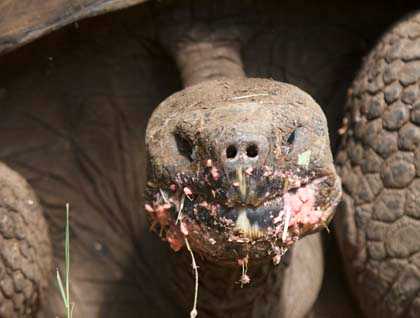Imagine you were arriving to Galapagos, five hundred years ago, directly from Europe. The world then only knew a few species, the common ones of Eurasia, the huge and very hard to miss from Africa. But the thousands of this new world were beyond their fancy.
Imagine you land on Santa Cruz, as we do today, and see these overly big tortoises, peacefully feeding on low vegetation, in a natural garden of tree-like giant sunflowers. Then you encounter iguanas, which are creatures of the new world only, so a complete novel sighting. Iguanas that swim, and that dive into unknown depths. It must have been too much already for our minds of five centuries ago! Then envision that you sail to another island, and the species you encounter are similar, but different. And for each island in the Galapagos you travel to, it is the same story, a discovery of never ever seen flora and fauna.
Why? I am sure we would have thought, why on these islands have we seen creatures found nowhere else in the world, and why are there some unique to specific islands? Why? That’s precisely what many asked themselves in the early years of discovery. It is what Darwin questioned when he visited this archipelago in 1835, and this is what Alfred Russell Wallace also thought about when he explored the Malay Archipelago twenty years after Darwin’s Voyage of the Beagle.
Many of the world’s extravagant life forms occur on islands. Island biogeography studies why and where and how, and we learn about it as we travel along this week, in the XXI century on board the National Geographic Islander.
The tortoises we found today at the National Park breeding center are from different islands, so we could see how they have unique characteristics for each place. We have perceived it with the four kinds of mockingbirds, with the thirteen species of Darwin’s finches, the fourteen species of prickly pear cactus. This archipelago is a haven to study island biogeography, and it is part of our goal as the week goes on.









